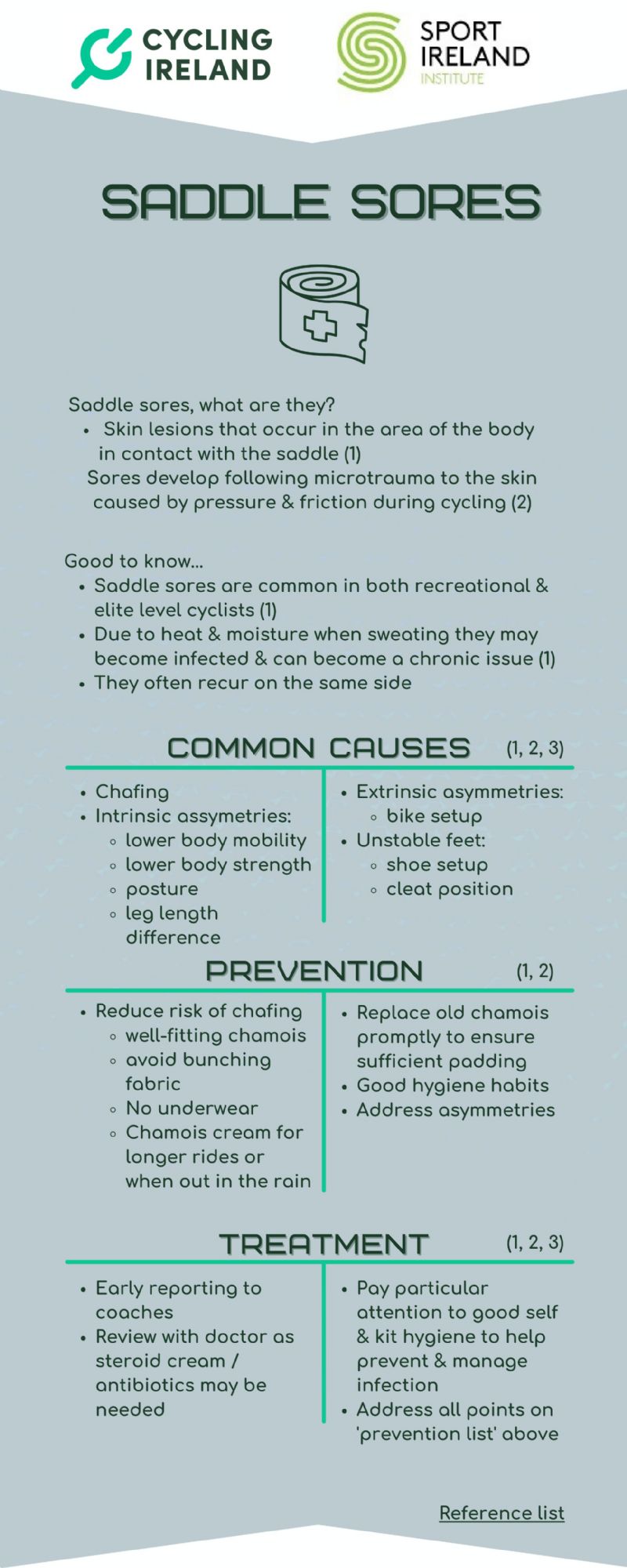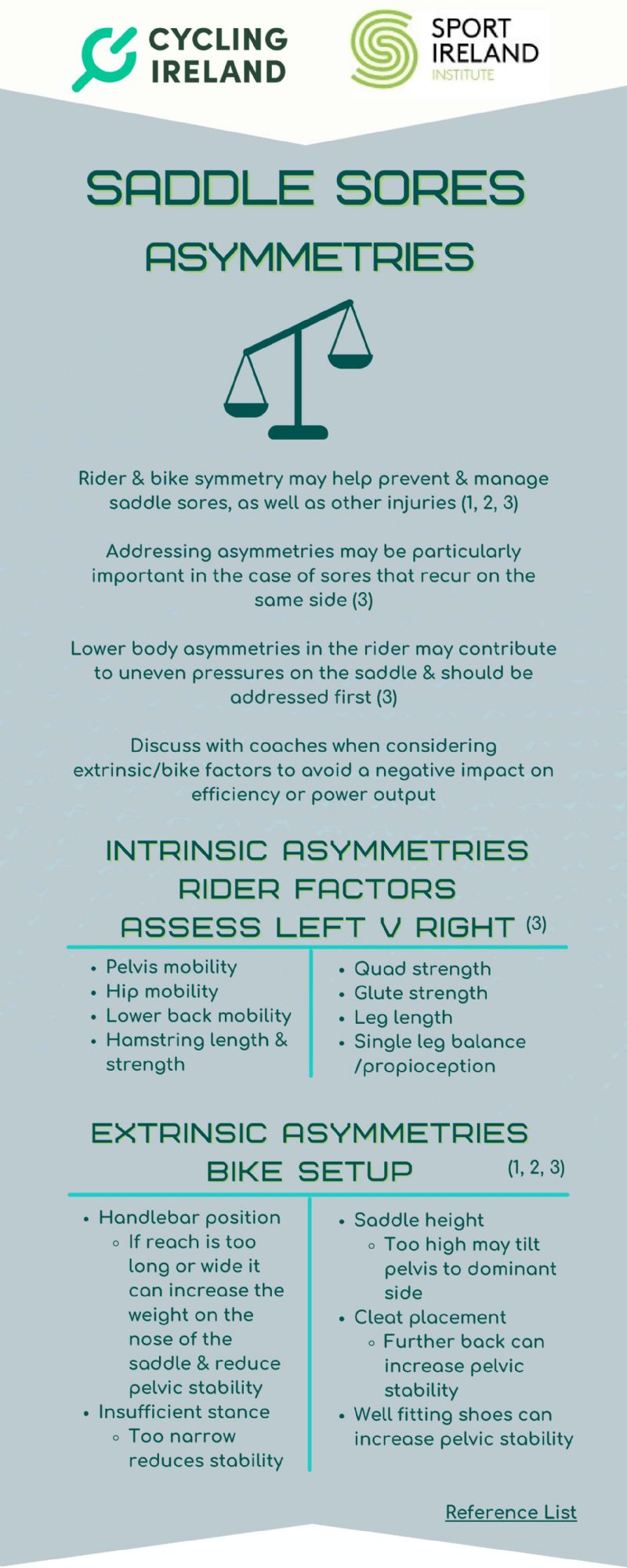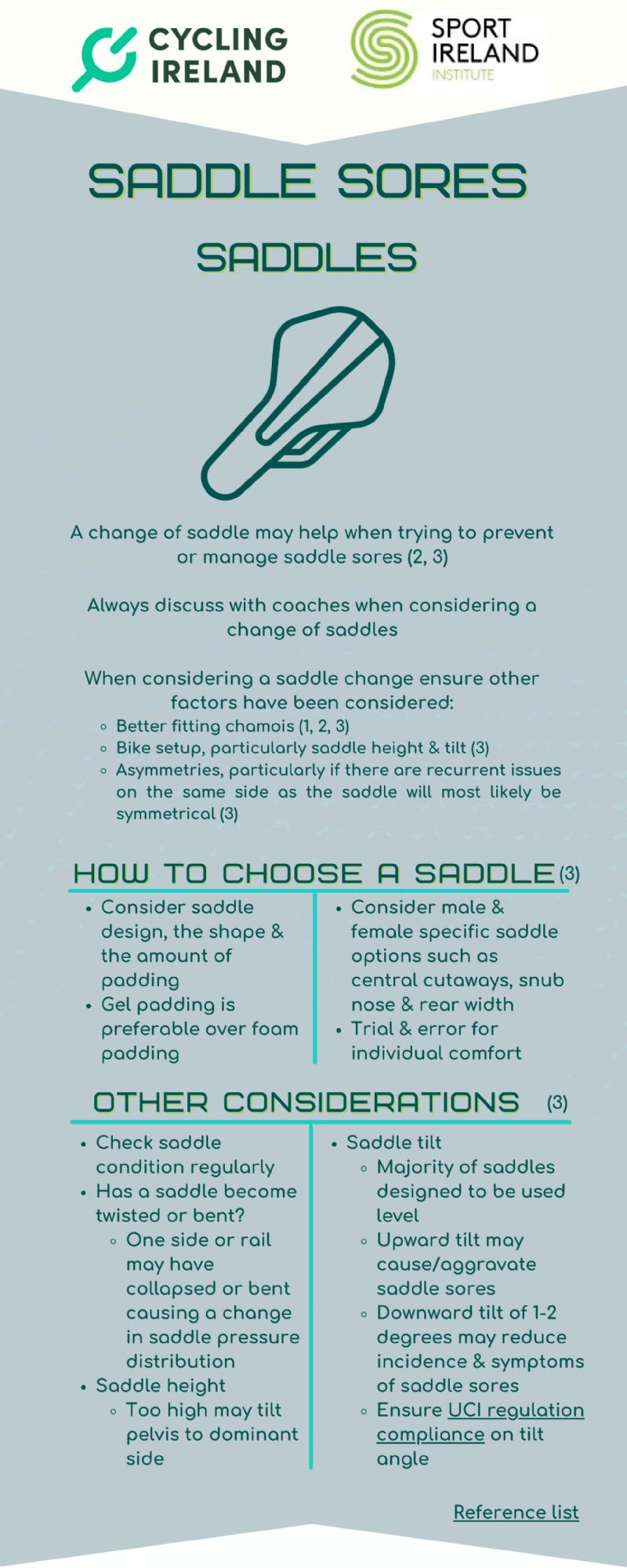Saddle Sores Guide – The Causes, Prevention And Treatment
Cycling Ireland And Sport Ireland Institute have teamed up to release a comprehensive guide to saddle sores.
A series of Infographics are available to athletes that offer information on the causes, prevention methods and treatments for one of the most common injuries among elite level and recreational cyclists alike.
The resources provide an in-depth look into causes and prevention of saddle sores and in particular hygiene, saddle selection and symmetry on the bike.
Saddle sores are painful skin lesions that can occur in the part of the body in contact with the saddle. Sores occur following microtrauma to the skin caused by pressure and friction during cycling.
Due to heat and moisture while cycling, saddle sores may become infected and can become a chronic issue. They often recur on the same side.
Common causes stem from chafing, intrinsic and extrinsic asymmetries or unstable feet. There are also a number of measures cyclists can take to reduce the risk of developing saddle sores as well as several options to help treat the injury.
The series was launched after feedback from riders participating in the Athlete Development Programme (ADP) and is hoped will increase the general awareness of the issue as well as its causes, prevention and treatment.
ADP and Series lead Thomas Fallon said:
“This collaboration was initiated after prevalence insights gained from previous junior cohorts within the ADP. Through collaboration with Sport Ireland Institute, we developed a 4-part infographic educational series. This series serves to increase general awareness amongst athletes of some predisposing factors or habits that they currently have."
"In turn, this allows us to create a foundation of knowledge which encourages best practice/hygiene habits. It's hoped this will lead to a reduction in saddle sore prevalence within athletes allowing for greater training enjoyment/comfort, increased training availability and consistency. All this plays a part in medium to long term athlete engagement and performance."
More information is available on the infographics below. They can be downloaded here.




